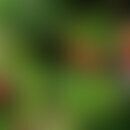Synonym(s)
DefinitionThis section has been translated automatically.
Orthosiphonis folium, also called Orthosiphon leaves or Indian kidney tea, is a drug made from the cut, dried leaves and stem tips of Orthosiphon stamineus, the cat's whiskers, used in herbal medicines for the treatment of urinary tract complaints, as well as obesity and high lipid levels, among others.
HMPC - Monograph: Traditional-use: increase urinary volume, flushing of the urinary tract in mild bladder complaints
ESCOP Mon ograph: flushing of the urinary tract, in inflammation and kidney gravel, supportive in bacterial infections of the urinary tract
Commission E-Monograph: flushing in bacterial and inflammatory diseases of the urinary tract and kidney gravel.
Empirical medicine: support of renal excretion
IngredientsThis section has been translated automatically.
Orthosiphonis folium contains up to 0.7 % lipophilic flavones, including the efficacy determining flavone derivatives sinensitin, scutellarein and eupatorin. Further ingredients are classified according to PH. Eur. at least 0.6 % rosmarinic acid (formerly 0.05 % sinentesin), little essential oil with limonene, Borneol, thymol, 0.5 to 1 % caffeic acid derivative and about 3 % potassium salts.
You might also be interested in
EffectsThis section has been translated automatically.
Orthosiphonis folium has bacteriostatic, fungistatic, spasmolytic, diuretic and antiphlogistic effects. Animal studies indicate a lipid-lowering and weight-reducing effect in food-induced obesity.
Field of application/useThis section has been translated automatically.
Orthosiphon leaves are used according to Commission E (monographs also by ESCOP and HPMC) for bacterial and inflammatory diseases of the urinary tract and for the prevention of renal gravel. In addition, they are used as adjuvant therapy to increase the volume of urine.
In Southeast Asia, Orthosiphon stamineus is used to treat kidney stones, arteriosclerosis, fever, diabetes, cystitis and rheumatism.
Lipid-lowering and weight-reducing effects were shown in animal studies with mice.
DosageThis section has been translated automatically.
The daily dose is 6 to 12 g of the drug.
Undesirable effectsThis section has been translated automatically.
There are no known adverse effects.
ContraindicationThis section has been translated automatically.
For edema due to reduced heart and kidney function.
InteractionsThis section has been translated automatically.
There are no known interactions with other drugs.
Recipe(s)This section has been translated automatically.
The fixed combination bearberry leaves+goldrod+orthosiphon leaves consists of:
- Uvae ursi folium (bearberry leaves)
- Solidaginis herba (goldenrod)
- Orthosiphonis folium (Orthosiphon leaves)
It has an anti-inflammatory, slightly antispasmodic, bacteriostatic effect in an alkaline environment, promotes urinary excretion and is used as a support in inflammatory diseases of the urinary tract.
The fixed combination of birch leaves+goldrod+orthosiphon leaves consists of
- Betulae folium (birch leaves)
- Solidaginis herba (goldenrod)
- Orthosiphonis folium (Orthosiphon leaves)
has an anti-inflammatory, slightly antispasmodic effect, promotes urinary excretion and is used as a preventive measure against renal gravel and as part of a flushing therapy for inflammatory diseases of the urinary tract.
Trade namesThis section has been translated automatically.
Monopreparations have diuretic and spasmolytic effects:
- Carito® Mono capsules (ED 278mg) 2-2-2 Kps/day
- Surevit® Mono capsules (ED 277.5mg) 2-2-2 Kps/day
Combination preparations of orthosiphon leaves+goldrutenkraut+ Hauhechelwurzel are used for bacterial and inflammatory diseases of the urinary tract and for kidney grit:
- Orthosiphonis folium (Orthosiphon leaves)
- Solidagnis herba (Goldenrod herb)
- Hauhechel Root
- =Aqualibra® film-coated tablets: Dosage: 1(2)-1(2)-1(2) Tbl./day)
Note(s)This section has been translated automatically.
During a flushing therapy, care must be taken to ensure a sufficient fluid intake of at least 2 l/day.
LiteratureThis section has been translated automatically.
- Cicero AF et al. (2012) Effect of a combined nutraceutical containing Orthosiphon stamineus effect on blood pressure and metabolic syndrome components in hypertensive dyslipidaemic patients: a randomized clinical trial. Complement Ther Clin Pract 18:190-194.
- Dolečková I et al. (2012) Antiproliferative and antiangiogenic effects of flavone eupatorin, an active constituent of chloroform extract of Orthosiphon stamineus leaves. Fitoterapia 83:1000-1007.
- Laavola M et al. (2012) Flavonoids eupatorin and sinensetin present in Orthosiphon stamineus leaves inhibit inflammatory gene expression and STAT1 activation. Planta Med 78:779-786.
- Mohamed EA et al. (2011) Antihyperglycemic effect of orthosiphon stamineus benth leaves extract and its bioassay-guided fractions. Molecules 16:3787-3801.
- Schilcher H (2016) In: Leitfaden Phytotherapie, Urban & Fischer Verlag Munich, pp. 236 f.
- Yam MF et al. (2009) Evaluation of the anti-pyretic potential of Orthosiphon stamineus Benth standardized extract. Inflammopharmacology 17:50-54.
- Seyedan A et al. (2017) Antiobesity and lipid lowering effects od Orthosiphon stamineus in high-fat-diet-induced obese mice. Planta med 83: 684-692
- https://arzneipflanzenlexikon.info/orthosiphon.php.
- Wenigmann M.(2017) Phytotherapy medicinal drugs phytopharmaceuticals application. Urban & Fischer: pp 165-166




